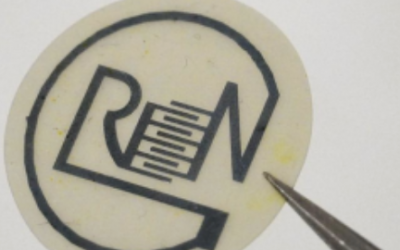EHI study on self-checkout and self-scanning systems in retail
Cologne, 5 November 2025 Self-checkout systems have more than doubled in Germany over the last two years. In over 11,000 shops, customers have the option of scanning and paying for their purchases themselves – often with a range of different options. ‘Retailers see customers scanning items themselves at the checkout or on the shelf as an additional customer service because it reduces waiting times and avoids the hassle of repacking at the checkout. Staff shortages in particular have accelerated the spread of such systems,’ explains Frank Horst, head of the EHI Self-Checkout Initiative and expert on inventory differences at EHI.
More self-checkout than self-scanning
Customers can check out themselves in 11,120 stores. The EHI market survey documents stationary self-checkout tills in 10,366 stores and self-scanning systems in 3,646 stores. The latter either with a hand-held scanner, a scanner on the shopping trolley or an app on the customer’s own smartphone. In around 2,900 shops, customers can choose between at least two types of self-checkout. Over the last two years, the number of retail shops with stationary self-checkout systems in Germany has increased by 143 per cent. Mobile self-scanning systems have seen an increase of 69 per cent.
Food retailers are pioneers
Grocery stores, drugstores and DIY stores are best suited for self-checkouts due to their customer structure, customer frequency and shopping basket size, as they offer the greatest benefits for their customers. The food retail sector is a pioneer: 60 per cent of all shops with stationary self-service checkouts are still in the food retail sector.
There are now more than 6,240 stores in the traditional food retail sector with an average of 3.98 self-service checkouts per store, including just under 2,300 discount food stores. This means that stores with self-service checkouts have a market share of well over 10 per cent. Drugstores are the second largest group of stores with SCO systems, accounting for 21 per cent.
Of the nearly 5,200 drugstores in Germany, a good 40 per cent offer self-checkout systems to their customers. DIY stores follow with 8 per cent. Of the approximately 2,000 DIY and home improvement stores operated by the leading retail groups, 880 stores are already equipped with self-checkout systems.
Over 38,000 self-checkout systems
In 10,366 stores, 38,650 self-checkout systems are in use at stationary self-checkout systems, almost 25,000 of which are in food retail. Of the total of 710,000 checkouts in the retail sector (in the narrow sense), one in every 18 is now a self-checkout system. However, they are unevenly distributed across different sectors. If we compare the approximately 25,000 SCO checkouts used in food retail with the approximately 220,000 manned checkouts, it quickly becomes clear that self-service checkouts have now gained considerable market significance in Germany due to their growth. In addition, they have great market potential, as many food retailers are planning to install them when renovating or opening new stores. Furthermore, it can be assumed that further growth will also take place in the discount sector.
All details of the new SCO market survey can be found on the homepage of the SCO Initiative.
Data basis:
The EHI market analysis as of August 2025 covers retail stores in Germany, i.e. retail in the narrow sense, excluding pharmacies, craft businesses such as bakeries, butchers, catering-related businesses and petrol stations.
Definitions:
- Self-checkout systems: stationary and mobile systems for self-registration and payment.
- Stationary self-service checkout: synonymous with stationary SCO checkout.
- Mobile self-scanning: mobile systems on the sales floor for self-registration of goods.


